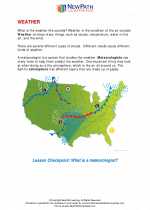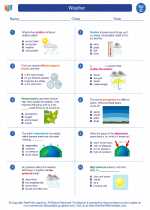Margins
In the context of science, margins refer to the edges or borders of an object or a region. Margins can be found in various natural formations and are important in understanding the physical and biological characteristics of an area.
Types of Margins
There are different types of margins that can be studied in science:
- Geological Margins: These refer to the boundaries between different geological formations, such as the margins between tectonic plates, the coastline, or the edges of rock layers.
- Biological Margins: In biology, margins can refer to the edges of leaves, petals, or other plant parts. They can also be important in studying the boundaries of ecosystems and habitats.
- Document Margins: In the context of documents or printed materials, margins refer to the blank spaces around the edges of the paper. This concept is important in design and formatting.
Study Guide
Here are some key points to consider when studying margins:
- Identify and describe different types of margins found in nature and in man-made objects.
- Explore the role of margins in maintaining the stability and balance of ecosystems.
- Examine the impact of changing margins, such as coastal erosion or deforestation, on the environment.
- Learn about the significance of margins in design and visual arts, including their use in framing and composition.
Understanding margins is important in various scientific disciplines and can provide insights into the structure and function of natural and artificial systems.
.◂Science Worksheets and Study Guides Third Grade. Weather
Study Guide Weather
Weather  Worksheet/Answer key
Worksheet/Answer key Weather
Weather  Worksheet/Answer key
Worksheet/Answer key Weather
Weather  Worksheet/Answer key
Worksheet/Answer key Weather
Weather  Vocabulary/Answer key
Vocabulary/Answer key Weather
Weather  Vocabulary/Answer key
Vocabulary/Answer key Weather
Weather 

 Worksheet/Answer key
Worksheet/Answer key
 Worksheet/Answer key
Worksheet/Answer key
 Worksheet/Answer key
Worksheet/Answer key
 Vocabulary/Answer key
Vocabulary/Answer key
 Vocabulary/Answer key
Vocabulary/Answer key

The resources above cover the following skills:
EARTH AND SPACE SCIENCE (NGSS)
Earth’s Systems
Students who demonstrate understanding can:
Represent data in tables and graphical displays to describe typical weather conditions expected during a particular season.